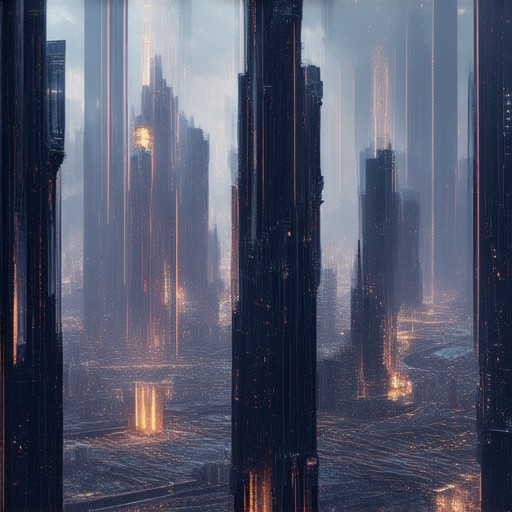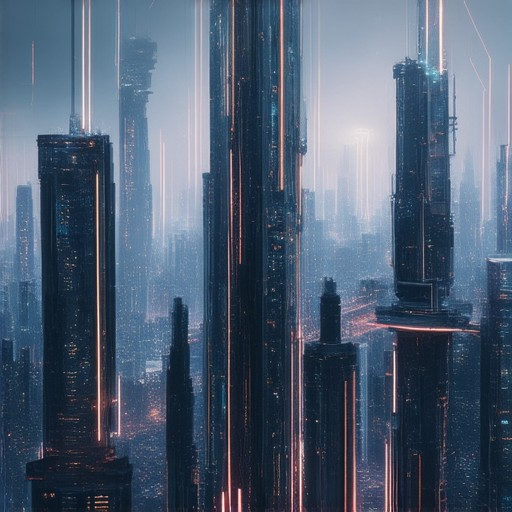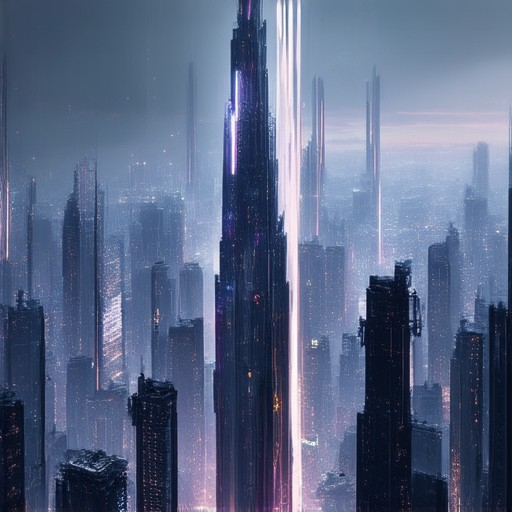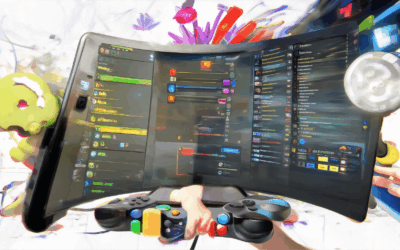Creating captivating characters begins with a powerful concept art that brings their personality and story to life. Whether you’re working on a comic, video game, or illustration, concept art for characters is essential for conveying depth and emotion. This guide explores everything you need to know to master the art of crafting compelling concept art, from understanding different styles to employing techniques that will make your characters stand out. Discover how to leverage tools and resources, balance time efficiency with quality, and learn the secrets to creating unique and memorable designs. With expert tips and real-world examples, this article will walk you through the entire process of developing concept art for characters, ensuring your work grabs attention and resonates with audiences.

Character Concept Art Style
Character concept art is a vital part of game development, serving as the visual blueprint for your characters. It captures their personality, role, and overall aesthetic, guiding the design process from concept to final execution. Below is a detailed guide to creating effective character concept art.
Steps to Create Character Concept Art
- Sketching Phase : Begin with loose, dynamic sketches to explore proportions, poses, and expressions. This phase is about capturing the initial vision without worrying about detail.
- Designing Features : Develop facial features, clothing, and accessories. Consider the character’s background and how it influences their appearance. For example, a warrior might have rugged features, while a mage could be more delicate.
- Color Palette Selection : Choose colors that reflect the character’s personality and environment. Warm tones for adventurers, cool hues for mystical beings, and vibrant colors for lively creatures.
- Adding Details : Enhance the drawing with textures, patterns, and small details like buttons on clothes or unique markings on the character.
- Final Touches : Refine the artwork, ensuring proportions are consistent and the character looks cohesive in all angles.
Tools and Resources
To elevate your character concept art, consider these tools and resources:
- Indie Dev Games – A comprehensive platform offering tutorials, reviews, and tips for indie game developers. Explore articles on character design tools and techniques: Visit Indie Dev Games .
- Concept Art Software – Use digital tools like Adobe Photoshop, Procreate, or Krita to bring your ideas to life.
- Reference Materials – Study anatomy books, nature guides, and real-world art to inspire your designs.
- Community Forums – Engage with fellow artists on platforms like Reddit’s r/gamedev or Discord groups to share ideas and get feedback.
Common Styles in Character Concept Art
- Realistic : Photorealistic characters with attention to every detail, often used in RPGs.
- Cartoonish : Charming and playful styles, perfect for children’s games or comics.
- Cyberpunk : Futuristic designs with neon accents and sleek aesthetics.
- Fantasy : Imaginary creatures with magical elements, ideal for MMORPGs.
- Minimalist : Simplified forms emphasizing functionality, common in mobile games.
By mastering these styles and refining your technique, you can create concept art that stands out and aligns with your project’s needs. Remember, the goal is to communicate the character’s essence effectively, making them memorable and engaging for players.
How Much Does a Character Concept Artist Make?
A character concept artist’s salary can vary significantly depending on several factors, including location, experience, and the type of industry they work in. According to recent data from job platforms, the average annual salary for a concept artist in California in April 2025 is typically between $70,000 and $120,000.
For full-time positions, particularly in larger studios or established companies, salaries tend to be on the higher end of this range. Freelance concept artists or those working in smaller studios or indie开发者 may earn less due to differences in benefits and stability.
Factors influencing earnings include:
- Location: Higher costs of living in urban areas like Los Angeles or San Francisco can drive up salaries.
- Experience: More experienced artists may command higher rates, especially in in-demand fields like video games.
- Industry: Studios and companies focused on video games or high-paying industries may offer better compensation packages.
- Freelancing: Rates can vary greatly based on project complexity and client demand.
Overall, the salary range reflects the demand for creative talent in concept art across various industries, with opportunities available for both full-time and freelance artists looking to showcase their skills in character design and concept art.

How Long Does Character Concept Art Take?
The time it takes to create character concept art depends on various factors:
- Simplicity vs. Complexity: Simple characters may take 1-2 days, while complex ones with intricate details can take 5-10 days.
- Project Scope: A single character might take a few days, while a larger project with multiple characters could span several weeks or months.
- Artist Skill Level: An experienced artist might complete a complex character in about a week, while a less experienced artist may take twice as long.
- Collaboration and Feedback: Working with a team or dealing with multiple revisions can extend the timeline.
To manage the process effectively, plan ahead, communicate clearly, and set realistic deadlines. This will help ensure your character concept art is completed efficiently and meets your expectations.

How to Generate Concept Art
Creating concept art involves a mix of creativity, technical skills, and attention to detail. Here’s a step-by-step guide to help you craft compelling concept art:
1. Understand the Project Requirements
Before diving into creating concept art, it’s essential to understand the project’s goals and expectations. Whether you’re working on a video game, a comic book, or a digital illustration, knowing the purpose of the artwork will guide your creative direction.
2. Research and Gather Inspiration
Research is a cornerstone of great concept art. Look at various sources of inspiration, such as movies, books, video games, and online galleries. Analyze the styles, colors, and compositions that resonate with you and align with the project’s vision.
Visit platforms like Indie Dev Games to explore diverse artistic styles and get inspired by fellow creators.
3. Sketch and Iterate
Sketching is the foundation of concept art. Start with loose, quick sketches to explore ideas. Don’t worry about perfection—focus on capturing the essence of your vision. Experiment with different perspectives, lighting, and mood to see what works best.
Refine your sketches by iterating on details. Ask yourself critical questions: Does this composition work? Are the colors harmonious? How can I make the character or scene more dynamic?
4. Utilize Digital Tools
Modern tools like Adobe Photoshop, Procreate, or Krita can transform your sketches into polished concept art. These programs offer powerful features for retouching, coloring, and adding effects, allowing you to bring your ideas to life.
For indie developers, tools like Indie Dev Games’ resource library can provide valuable tutorials and assets to streamline your workflow.
5. Add Depth Through Lighting and Atmosphere
Lighting and atmosphere play a crucial role in concept art. Consider how light interacts with objects and environments to create mood. Use shadows, highlights, and color gradients to give your scenes dimensionality and emotional impact.
6. Finalize Your Concept
Once you’re happy with your sketch, it’s time to finalize it. Clean up lines, adjust proportions, and ensure consistency across the artwork. This final version serves as a blueprint for further development.
7. Share and Get Feedback
Before moving forward, share your concept art with peers or mentors. Their feedback can provide valuable insights and help you refine your work. Join communities like Indie Dev Games Forum to connect with other creators and discuss your progress.
8. Stay Curious and Experiment
Concept art is a continuous learning process. Stay curious, experiment with new techniques, and stay inspired by the world around you. Every project is an opportunity to grow as an artist and refine your style.
By following these steps, you’ll develop a strong foundation for creating concept art that captivates and communicates effectively. Remember, the goal is to convey your vision clearly while leaving room for interpretation and evolution.
How to Draw Concept Art for a Character
Drawing concept art for a character involves a mix of creativity and technical skill. Here’s a step-by-step guide to help you create compelling and unique character designs:
- Step 1: Brainstorm Ideas
- Step 2: Establish Proportions
- Step 3: Develop the Face
- Step 4: Design the Body
- Step 5: Add Details
- Step 6: Refine the Design
- Step 7: Final Touches
Start by thinking about the character’s role, personality, and background. Are they a hero, villain, or something entirely different? Consider their age, gender, race, and occupation. Sketch rough ideas on paper or digitally to explore different possibilities.
Sketching a basic outline of the character helps determine their size and shape. Make sure the proportions are consistent from head to toe. Use guides or grids to help maintain accuracy.
The face is key to expressing emotion and personality. Draw features like eyes, nose, and mouth, then experiment with expressions to see how they affect the overall look. Add details like facial hair if applicable.
Draw the body in a pose that shows off the character’s movement or stance. Consider the type of clothing they might wear and how it fits their body shape. Add textures or patterns to make the design more interesting.
Incorporate elements like accessories, weapons, or environmental surroundings to give the character depth. Small details can make the concept art more believable and engaging.
Go back and tweak the character’s appearance. Adjust proportions, refine facial features, and smooth out lines to create a cohesive and polished look. Consider feedback from others to make improvements.
Add shading, highlights, and shadows to bring the character to life. This gives the artwork more dimension and makes it stand out. Finalize the sketch by erasing any unnecessary lines and ensuring the composition is balanced.
Remember to stay creative and experiment with different styles. The most important thing is to capture the essence of your character and make their concept art unique!

Getting Started in Concept Art
Starting in concept art can be both exciting and challenging. Here’s a structured guide to help you begin your journey:
- Fundamentals of Art and Design
- Understand the basics of art composition, color theory, and shading.
- Practice sketching daily to build your observational skills.
- Study the works of concept artists and visual development artists for inspiration.
- Developing Your Skills
- Focus on anatomy, particularly for characters and figures.
- Experiment with different art styles and mediums.
- Take online courses or workshops to gain knowledge and technique.
- Choosing the Right Tools
- Invest in a good drawing tablet and stylus for precision.
- Use digital tools like Procreate, Adobe Photoshop, or Krita.
- Explore free alternatives such as ArtRage or Brushes for iPad.
- Building a Portfolio
- Start with personal projects to showcase your creativity.
- Include character designs, environment concepts, and storyboards.
- Upload your work to platforms like Behance, Dribbble, or ArtStation.
- Seeking Feedback and Mentorship
- Join online communities like ConceptArt.org or Reddit’s r/conceptart.
- Participate in critique sessions to improve your work.
- Look for mentors or join online groups for guidance.
- Staying Updated with Trends
- Follow concept artists on social media platforms.
- Subscribe to art newsletters and podcasts for industry insights.
- Regularly visit art blogs and websites to stay informed.
- Networking and Promotion
- Attend art conventions and local events to connect with others.
- Share your work on social media and art communities.
- Create an online portfolio and blog to promote your work.
- Understanding the Business Side
- Learn how to approach clients and negotiate commissions.
- Build an online presence through a website and social media.
- Market yourself effectively to attract clients and opportunities.
- Persistence and Growth
- Be prepared for criticism and use it as a tool for improvement.
- Set realistic goals and track your progress over time.
- Stay curious, experiment, and keep learning throughout your journey.
By following these steps, you can build a solid foundation in concept art and gradually grow your skills and career. Remember, consistency and dedication are key to long-term success in this field.




0 Comments